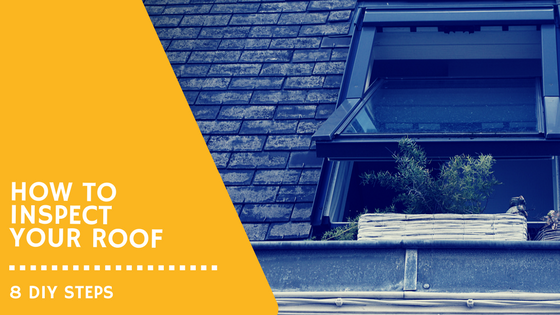When is the last time you inspected your roof? As a homeowner it can be overwhelming when it comes to home maintenance, and you will likely forget about the roofing. This should be done as preventative maintenance at least once per year or after any severe storm or weather event. The most common cause of water damage in the home comes from flooded basements and leaky roofs. If you’re scared of heights, don’t worry. You can complete an inspection from the ground using binoculars. Early signs of trouble include dark circles on ceilings, peeling paint on roof overhangs, damp spots alongside fireplaces and water stains on pipes venting the water heater or furnace.
Below are 8 DIY steps to inspect your roof
Step 1:
Inspect the roof from the ground for signs of damage, sagging, and aging.
Step 2:
Identify areas with moss, algae, and piles of leaves – these areas are famous for causing costly leaks and water damage.
Step 3:
Keep your eye out for buckled and curled shingles. Hot air from attics often cause shingles to buckle and curl away from the home, putting your roof at risk for weather damage and poor roof ventilation.
TIP:
The less you walk around on your roof, the better for your roofing — and the safer for you!
Step 4:
Look for missing, damaged, and aged shingles. Missing shingles = direct exposure to inclement weather. Check for burst nails that need to be hammered back.
Step 5:
Clean your gutters and roof overhangs and maintain your downspouts. As you’re performing these essential tasks, make note of open joins and signs of rot, as those are typical indicators of larger issues.
Step 6:
Look closely for granule loss. Granule loss indicates that shingles have aged or have been affected by weather and are no longer protecting your home against damaging storms.
TIP:
If your asphalt roof is 15 years old or more, it may be due for replacement.
Step 7:
While on top of your roof, inspect the counter flashing. Note damaged, cracked, and shrinking sealant around the edges.
Step 8:
If your home has an attic, look for signs of water penetration under the roof.
In Conclusion…
After you’ve completed your roof inspection, take some time to review your findings. Did you stumble across any areas of major concern? If so, contact a local professional roofer and seek at least two bids for repair work. You can use a handyman for minor fixes, but the person should have proof of liability, and have worker’s compensation insurance. Remember: a smart homeowner is a pro-active homeowner. Fixing minor problems and concerns before they become disasters is the key to stress-free home maintenance.




